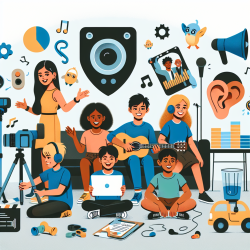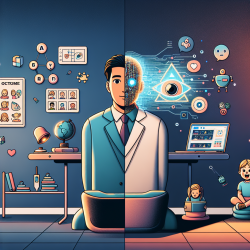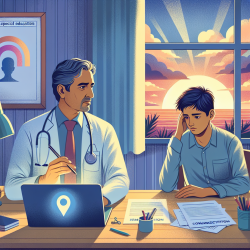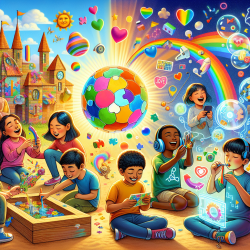In the realm of speech-language pathology, creating effective interventions for children is paramount. A groundbreaking research study titled “The world is full of magic things, patiently waiting for our senses to grow sharper” (WB Yeats): enhancing resilience among deaf young people in South Africa through photography and filmmaking, offers a fresh perspective on how we can empower deaf youth. This study demonstrates how photography and filmmaking can be transformative tools in enhancing resilience among deaf children, a concept that practitioners can adopt and further explore in their practice.
Understanding the Research
The study focuses on deaf young people in South Africa, utilizing film and photography as mediums to enhance resilience. The research explores three primary questions:
- What is disclosed about deaf young people’s worldmaking through the filmic and photographic modality?
- What specific impacts do deaf young people’s ontologically visual habitations of the world have on the production of their film/photographic works?
- How does deaf young people’s visual, embodied praxis through film and photography enable resilience?
Key Findings and Practical Applications
The study's findings are organized around three key themes:
- ‘Writing’ into reality through photographic practice
- Filmmaking as embodied emotional praxis
- Enhancing resilience through visual methodologies
1. Writing into Reality Through Photographic Practice
Photography allows deaf young people to create and communicate their reality, often overlooked due to the dominance of orthographic mediums. Practitioners can incorporate photography projects into their therapy sessions, enabling children to express their experiences and emotions visually.
2. Filmmaking as Embodied Emotional Praxis
Filmmaking provides a unique avenue for deaf youth to explore and express complex emotions. This method aligns with the embodied nature of sign language, where the whole body is used for communication. Encouraging children to create short films about their feelings and experiences can be a powerful tool in emotional literacy development.
3. Enhancing Resilience Through Visual Methodologies
The research highlights that resilience is not an inherent trait but a capacity developed through supportive and engaging environments. Photography and filmmaking offer such environments, fostering self-esteem, agency, and a hopeful outlook. Practitioners can create similar supportive spaces in their therapy sessions, allowing children to explore their identities and aspirations through visual storytelling.
Implementing the Findings
To implement these findings in practice, consider the following steps:
- Introduce photography and filmmaking as regular activities in therapy sessions.
- Encourage children to document their daily lives and emotions through photographs and short films.
- Facilitate group discussions and peer reviews of the visual content created by the children to build a supportive community.
- Provide technical training on using cameras and editing software, empowering children with new skills.
Encouraging Further Research
While this study provides valuable insights, further research is needed to explore the long-term impacts of visual methodologies on resilience among deaf youth. Practitioners are encouraged to document their experiences and share their findings with the broader community to build a robust evidence base.
Conclusion
Photography and filmmaking are not just creative outlets but powerful tools for enhancing resilience among deaf youth. By integrating these methodologies into therapy sessions, practitioners can foster a supportive environment where children can express themselves, build self-esteem, and develop a hopeful outlook for the future.To read the original research paper, please follow this link:
The world is full of magic things, patiently waiting for our senses to grow sharper’ (WB Yeats): enhancing resilience among deaf young people in South Africa through photography and filmmaking.










